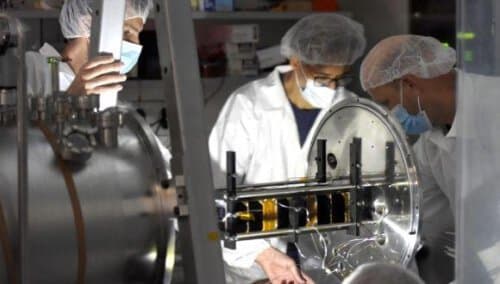The satellite is received strongly and clearly by 4 ground stations in Israel connected by a network between them: at Tel Aviv University, at the Science Center in Herzliya, at the Negev Gate and in Biruchem. In the coming days it will be rerouted to its regular route
Tel Aviv University's TAU-SAT1 satellite was successfully released from the International Space Station into orbit. This is reported by the staff of the Laboratory for Small Satellites at Tel Aviv University.
The satellite was launched to the International Space Station on 20.2/200 using Northrop Grumman's Antris launcher inside the Cygnus supply spacecraft. At an altitude of 48 km, the supply spacecraft Cygnus detached from the launcher and after XNUMX hours of space travel performed a docking maneuver to the station and unloaded the satellite.
Three weeks later, on March 14.3 at 16:30 p.m., Tausat 1 was launched into orbit using the robotic arm "Kibo" operated by Japanese astronaut Soichi Noguchi. The satellite deployed antennas 3 hours after the launch at exactly 19:30 and 45 minutes later it was already received strongly and clearly by 4 ground stations in Israel connected by a network between them: at Tel Aviv University, at the Science Center in Herzliya, at Shaar HaNegev and in Biruchem.
According to the video taken by the astronaut from the space station, the satellite appears to be spinning at a rate of about 15 degrees per second. The stabilization process has begun and within a few days the satellite will move tangentially to the orbit and perform the planned measurements and experiments. The telemetry downloaded from the satellite indicates that all the systems are in order, including all the avionics systems, the MCM, and also the four rockets manufactured by MMG. Temperature data on the internal components are also normal in the ranges of 15-20 degrees Celsius, and battery voltage monitoring also indicates the normality of the electrical system and normal charging.

"TAU-SAT1 is the first nanosatellite that was designed, built and tested independently in academia," explains Dr. Ofer Amarni, head of the Laboratory for Small Satellites at Tel Aviv University. "It is a nano-satellite, or tiny satellite, of the 'cube satellite' type, whose dimensions are 10 x 10 x 30 cm, the size of a shoe box, and it weighs less than 2.5 kg."
The satellite will study cosmic radiation
The research satellite will conduct several experiments in orbit. Among other things, it will measure the cosmic radiation in space. "It is known that there exists in space the movement of energetic particles originating from cosmic radiation," says Dr. Meir Ariel, director of the center for nano satellites at the university. "Our scientific mission is to monitor this radiation and measure the flux of particles and their products."
"It must be understood that the space environment is a hostile environment for humans but also for electronic systems. When these particles hit astronauts or electronic equipment in space, they can cause significant damage. The scientific information that will be collected by our satellite will make it possible to design protective measures for astronauts and space systems. For this purpose, we integrated in the satellite a number of experiments, developed by the Space Environment Department at the Sorek Nuclear Research Center.
More of the topic in Hayadan:

One response
"And this includes all the avionics systems, the MCM, and also the four MMG-made rockets." - Is it possible to translate into Hebrew?